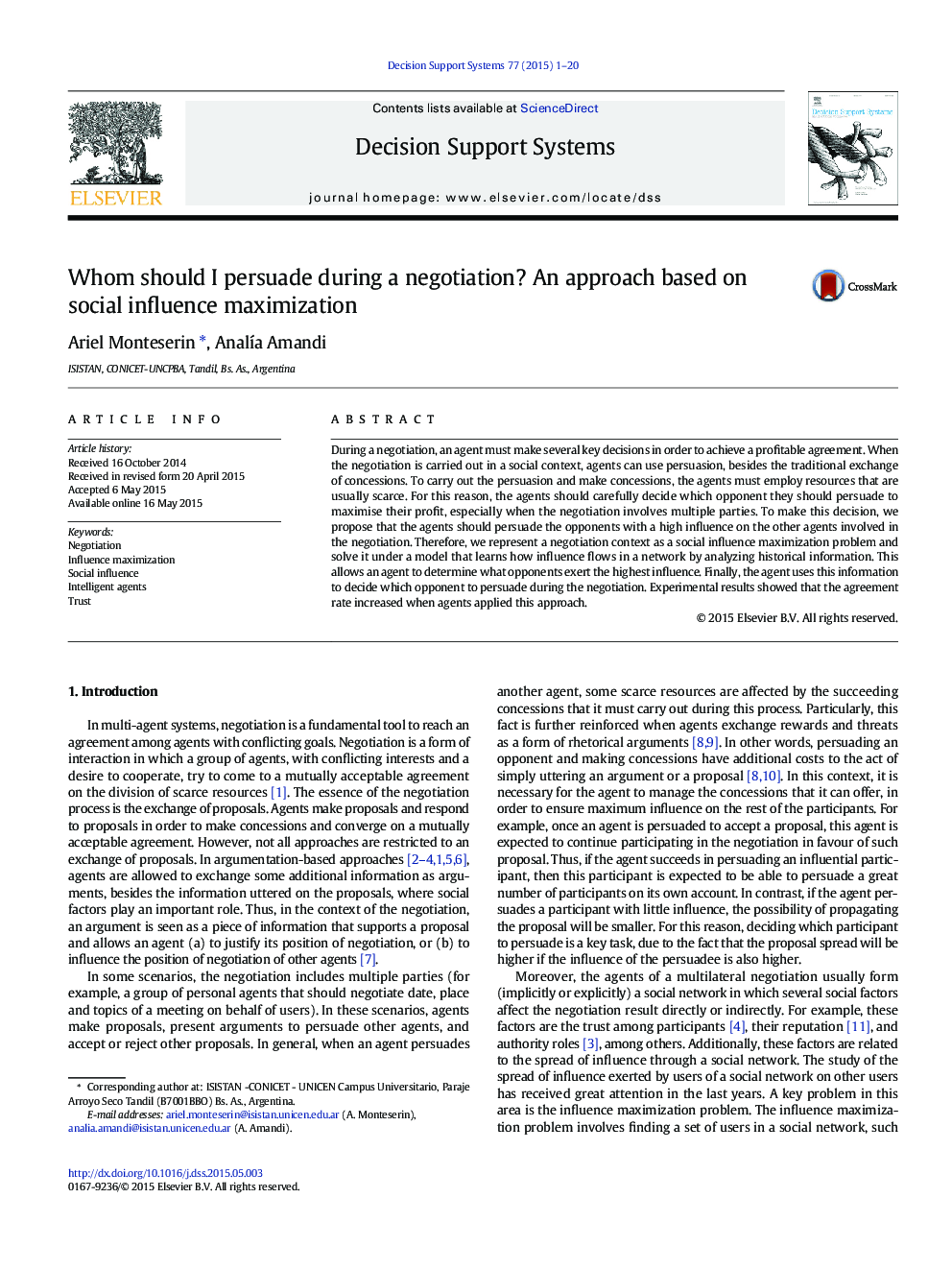| Article ID | Journal | Published Year | Pages | File Type |
|---|---|---|---|---|
| 554661 | Decision Support Systems | 2015 | 20 Pages |
•To carry out the persuasion and make concessions, the agents must employ resources that are usually scarce.•The agents should carefully decide which opponent they should persuade to maximise their profit.•The agents should persuade the opponents with a high influence on the other agents involved in the negotiation.•We represent a negotiation context as a social influence maximization problem.
During a negotiation, an agent must make several key decisions in order to achieve a profitable agreement. When the negotiation is carried out in a social context, agents can use persuasion, besides the traditional exchange of concessions. To carry out the persuasion and make concessions, the agents must employ resources that are usually scarce. For this reason, the agents should carefully decide which opponent they should persuade to maximise their profit, especially when the negotiation involves multiple parties. To make this decision, we propose that the agents should persuade the opponents with a high influence on the other agents involved in the negotiation. Therefore, we represent a negotiation context as a social influence maximization problem and solve it under a model that learns how influence flows in a network by analyzing historical information. This allows an agent to determine what opponents exert the highest influence. Finally, the agent uses this information to decide which opponent to persuade during the negotiation. Experimental results showed that the agreement rate increased when agents applied this approach.
